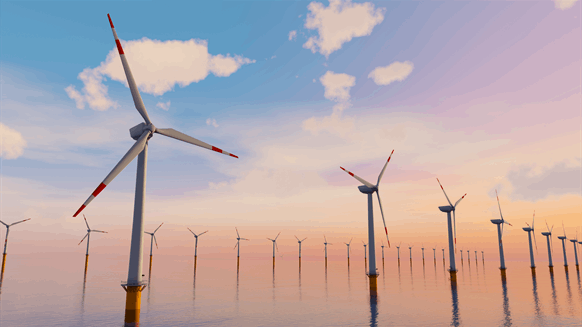Equinor ASA and its partners have brought the 88 megawatt Hywind Tampen project, Norway’s first offshore wind farm, into full operation.
The majority state-owned company calls the installation the world’s largest floating wind farm, saying it is a step towards the Nordic country’s goal of awarding an area equivalent to 30 gigawatts of offshore wind power for the 2040
“Gullfaks and Snorre are the first oil and gas fields in the world to be powered by offshore wind, reducing CO2. [carbon dioxide] emissions,” Equinor said in a press release about the ceremony in which Crown Prince Haakon opened the facility.
Hywind Tampen had already started producing power last year, but it has only become operational in August 2023, according to the announcement.
Consisting of 11 turbines based on a system developed by Equinor, the wind farm “is expected to cover around 35 percent of the annual electricity requirement on the five platforms Snorre A and B and Gullfaks A, B and C”, it said say the company
“Hywind Tampen is expected to reduce CO2 emissions by 200,000 tonnes per year from major oil and gas producers in the North Sea,” Kjetil Hove, Equinor’s executive vice president for the Norwegian Continental Shelf, said in a statement.
“The project has given us and the supplier industry valuable experience that will be important as we work together to further develop offshore wind in Norway and globally, expanding for the future,” added Hove.
Siri Kindem, head of Equinor’s renewable energy business in Norway, commented: “We will build bigger, reduce costs and build a new industry on the shoulders of the oil and gas industry.”
Prime Minister Jonas Gahr Store, who attended the opening ceremony, said in a speech: “Here and now, Norwegian industry and new natural resources are coming together in ways we could only dream of before.”
“Offshore wind offers opportunities for a new industrial era. We are taking important steps towards our climate goals and gaining access to new, clean energy,” added the Prime Minister.
“As a politician, I have often been critical of the claim that we are living in the age of oil. It is more correct to say that Norway as a nation lives in the age of energy, where we transfer knowledge and skills from a energy sector and use them to develop other types of energy.
“Hywind Tampen is proof that technology from the oil and gas industry can be used to develop green and renewable energy.”
The project was completed after five years, with 60 percent of the contract value awarded to local companies, Equinor noted.
“This has contributed to new activities, green jobs, local spin-offs and technology development for future floating offshore wind projects in a growing industry,” he said.
“Enova and the Norwegian business sector’s NoX fund have supported the project with NOK 2.3 billion [$214.7 million] and NOK 566 million [$52.8 million] respectively to stimulate technological development of offshore wind energy and emission reduction,” said Equinor, which estimates investment in the project to be $690.1 million (NOK 7.4 billion).
“The increase is due to a combination of costs related to COVID, delayed deliveries, quality issues with some deliveries and side effects,” he said. “In addition, increased market prices, exchange rate effects and supplier compensation for the effects of COVID-19 have contributed. At the same time, the expected CO2 tax and gas price have increased , which has a positive effect on the economics of the project.”
Hywind Tampen is a joint venture with INPEX Idemitsu Norge AS, Austrian state-backed OMV AG, Norwegian state-owned Petroro AS, Var Energi AS and Wintershall Dea AG.
To contact the author, please email jov.onsat@rigzone.com


